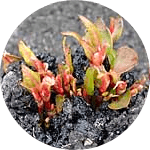Curled Dock Removal & Control

The overview
Common Name: Curled dock
Latin name: Rumex crispus
In Detail
- Curled dock spreads via seeds which are dispersed by wind, water, animals and machinery and has the potential to spread large distances.
- The plants have deep taproots which can grow to depths of 1.5m. Buds on pieces of broken taproot can create new plants spreading infestations.
- Curled dock can hybridise with Broad-leaved Dock, another injurious weed species.
Who we help
We have a long track record of managing some of the most complex sites in the country and have worked with the Environment Agency on several large flood alleviation projects, as well as providing advice to the majority of house builders and developers in the UK.
Click here to view who we help







Habitat & Distribution
- Curled dock can be found throughout the UK, it is a native species commonly found on waste grounds, farmland, hedgerows, road side verges, woodlands and gardens.
What’s the problem?
- Curled dock can quickly spread creating dense stands which outcompete other species.
- Each plant can produce up to 4000 seeds a year. Seeds can survive for up to 70 years in the soil making complete eradication difficult.
- Deep taproots enable the plant to establish and thrive in a range of environments, fragments of taproots are able to produce new plants if disturbed.
- Curled dock is an injurious weed species and is listed under the Weeds Act 1959.
Identification
- Curled dock is a tall perennial species which typically grows to 1m in height.
- It forms distinctive smooth leaves with a waved or curled appearance from the large basal rosette.
- Flower spikes appear from June to October and have numerous tightly packed clusters of reddish-brown flowers, these spikes die down once seed is produced.
- Seeds lack the toothed wing structure that Broad-leaved Dock have, and are oval / triangular in shape.
What are the legal implications? *England
- The Weeds Act 1959 aims to prevent the spread of listed species onto private land (Ragwort, Broad-leaved dock, Curled dock, Creeping thistle, and Spear thistle).
- The Act allows for powers of enforcement requiring land occupiers to take action to control infestations to prevent the spread of Injurious Weeds onto neighbouring land.
- Failure to comply with enforcements can result in penalties and convictions.
Control Methods
Chemical Control
Curled dock can be successfully treated with herbicide, applications are most effective whilst the plant is actively growing between April and October. Established infestations will required treatment over a number of years.
If you have concerns over Curled dock on your land, if you are unsure of your legal responsibilities, or, if you would like a quotation for control, please contact one of our specialist surveyors. Treatment costs start from £380.00 + VAT.

Where we have worked
We operate nationwide with a Rapid Response Team on standby 7 days a week, to deal with the most urgent client enquiries.
We’re a dedicated team of professionals who share a great deal of experience. We invest heavily in the continual training of all our employees, ensuring you always have a highly qualified team working on your project with the latest industry accreditations.
Our process

1. Identify
Our first step is to identify if you have an invasive plant. For a quick ID, you can send us some photos. Alternatively, we can carry out a full site survey to confirm the extent of the infestation.

2. Solution
We will provide a range of treatment options individually tailored depending on your site requirements.

3. Quote
A detailed breakdown of costs for each phase of treatment will be provided, including on-going monitoring programmes with insurance backed guarantees.

4. Removal
Our experienced and professional in-house teams will carry out the treatment to the highest of standards to achieve full eradication. All works are carried out in accordance with the INNSA Code of Practice.

5. Treatment
A range of treatment solutions are available, from in-situ herbicide application to excavation and removal or burial. All carried out in-house by our experienced team.

